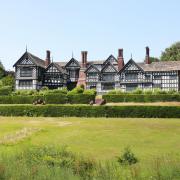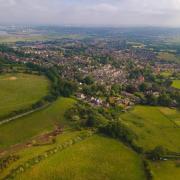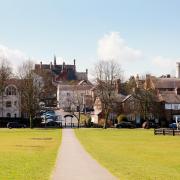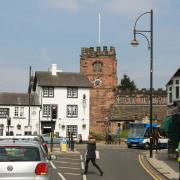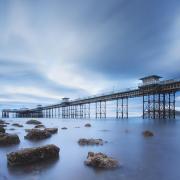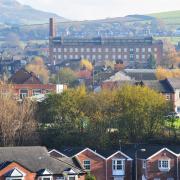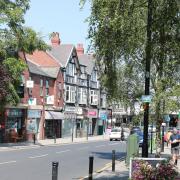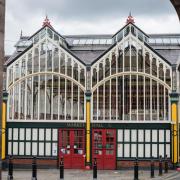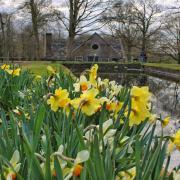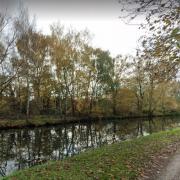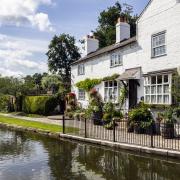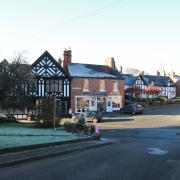As Macclesfield gears up for its 750th anniversary, Patrick O'Neill discovers a town with a silky past and a fantastic future. Photography by John Cocks
This is a big year for the inhabitants of Macclesfield (or Maxonians as the locals dub themselves). It is the 750th anniversary of the moment in 1261 that Lord Edward granted a borough charter to the hamlet named in the Domesday Book as boasting a hall and a mill. Edward went on to become the notorious King Edward I, now chiefly famous for executing William ‘Braveheart’ Wallace.
The charter year will host of series of events culminating in a two day ‘mainly medieval’ festival with 250 archers which will be recorded on July 16th and 17th by the BBC at Gawsworth Hall, home to Mary Fitton, the notorious ‘dark lady’ of Shakespeare’s sonnets.
Perhaps equally notorious, if not so famous was Captain HC Brocklehurst, who went to China and shot the panda which is now proudly displayed in Macclesfield’s West Park Museum. The panda was exhibited in Berlin and leading Nazi, Herman Goering, wanted to buy it for the German nation. Brocklehurst wisely refused, saving the panda for the town as an example of how not to preserve endangered wildlife.
A more reputable member of the family, Marianne Brocklehurst was responsible for bringing the excellently preserved Egyptian mummy to Macclesfield, though the case is now empty because the body was removed and buried in Egyptian soil.
West Park Museum is also home to the works of artist Charles Tunnicliffe who, among many other things, illustrated Tarka the Otter and several classics in the Ladybird series of children’s books.
As part of the 750th anniversary the resourceful Annabel Wills, Conservator and Curatorial Manager of Macclesfield Museums, is organising a series of exhibitions including ‘war memorabilia of the Cheshire Regiment’.
For the second exhibition, artist Louise Burston will design a commemorative handkerchief for the Macclesfield royal charter celebrations. Annabel said: ‘We hope to hold workshops to involve the public prior to the exhibition, in which case their handkerchiefs may also be in the exhibition.’ The dates are August 13th to October 8th 2011 and it will be at the Silk Museum on Park Lane.
‘A third is The Spring Exhibition 2011. We could describe it as an exhibition of High Sheriff uniforms and regalia on loan from John Richards of Gawsworth Hall’, Annabel added. ‘It will be displayed at the Heritage Centre and Mr Richards is planning to come to the opening in a horse-drawn carriage, complete with footmen - very Downton Abbey.’
But Macclesfield doesn’t live entirely in the past. Cheshire East Council is organising a Macclesfield Economic Masterplan to create a ‘deliverable proposal for a town centre regeneration scheme. The scheme will to take into account the needs and character of the town including heritage and leisure opportunities’.
With that in mind, and with much advice from the pleasant ladies at the Macclesfield Information Centre in the Town Hall, photographer John Cocks and I set off on a tour of the town, starting at Macclesfield’s famous 108 steps. There Irene Lea told me that an uncle from Cornwall had climbed all 108 after a triple bypass operation to prove to his friends in the Duchy he was still fit enough to clamber up Macclesfield’s toughest obstacle course.
Then it was on to the Heritage Centre, which began life as the Roe Street Sunday School in 1814. There ‘children were vital to the silk industry because their little fingers enabled them to handle the fine silk fibres’. It still acts as a Victorian classroom for the youngsters today. Though their nimble fingers are now more adept at texting than catching a flying shuttle.
Then it was on to the real thing, Paradise Mill, a genuine working mill with authentic hand-loom weaving equipment still in place. At the end of the tour, we had made the complete trip ‘from bugs to beauty,’ (or from silkworms to silk purses) that made Macclesfield the ‘silk town’ still commemorated in Silk FM and the nickname of the local football team, The Silkmen.
Macc menMacclesfield has produced an astonishing number of people who have achieved national and international fame. And their efforts are now celebrated in a new book by Maxonian Bob Burrows.
Arguably the most famous name to come from the town is Terry Waite CBE, MBE but other well-known sons of the town include England footballers Lee Dixon and Peter Crouch and blues guitar legend John Mayall.
Professor Sir James Chadwick, who discovered the neutron for which he was awarded the Nobel Peace Prize, was born in Bollington and from 1943-46 he headed the British team developing the atom bomb at Los Alamos that eventually led to the shortening of the Second World War.
And Doctor Michael Dexter, who also lived in Bolington, led a team that revolutionised the treatment of leukaemia by developing blood stem cells grown in test tubes.
Among the other people who were born, educated or lived in Macclesfield and feature in Bob's book are Langley-born Charles Frederick Tunnicliffe OBE, RA who was for many years Britain's finest wildlife artist, Antarctic explorer Sir Philip Brocklehurst, writer Vera Brittain and the BBC's Political Editor Nick Robinson.
Bob's book, Macclesfield Hall of Fame, is out now, published by Sigma Press.
For the chance to win a copy of the book, answer the following question
What is the nickname of Macclesfield Town Football Club
Write your answer in the comments below the winner will be chosen randomly - competition closes 1st March
Full Archant terms and conditions apply
Macc facts
Debbie Bayley a health care official at Macclesfield Hospital is campaigning against government plans to cull badgers to prevent bovine TB. She has badgers who visit her garden for dinner and if you want to book a spot to see them, email Debbie at baileysbadgers@hotmail.co.uk.
A plaque in Geelong near Melbourne honours ‘the Wild Man of Macclesfield.’ William Buckley was a convict who escaped and wandered the outback. He became an Aborigine chief for 30 years before his death aged 76 in 1856.
In the uprising of 1745 Bonnie Prince Charlie and his army marched through Macclesfield as they attempted to reach London. The mayor was forced, reluctantly to welcome the prince and this welcome is commemorated in one of the town's famous silk tapestries.
Macclesfield has been named the most uncultured town in Britain, based on its lack of theatres, cinemas and other cultural facilities. It's a report mocked by Maxonians proud of their multiplicity of societies and museums.l Macclesfield Heritage Trail gives a guided tour of the town where visitors are invited to 'take a walk though 1,000 years of history from royal hunting ground to world renowned silk town'.l The deckchairs on the Titanic were built in Macclesfield and Kate Winslett and Leonardo de Caprio can be seen sitting on exact copies of the Macclesfield deckchairs in the blockbuster film 'Titanic'.The road to Macc
Where is it? The town stands in the east of Cheshire, on the fringes of the Peak District, on the A523 Silk Road. Type SK10 1DX into your satnav to find the town centre. Trains between Manchester Piccadilly and Stoke stop here.
Where to park? There are car parks around the town centre- some of them free - and limited on-street parking is available too.
What to do? Macclesfield has a full range of shops, from big name stores to independent shops and there is a wide variety of options for eating too. When you've exhausted the town centre, enjoy the glorious hilly countryside to the east of the town.



